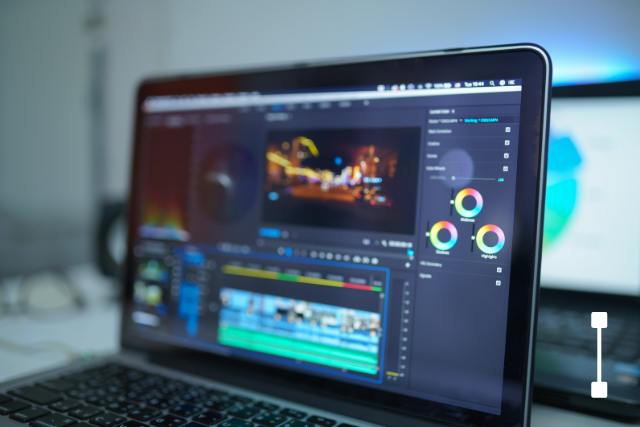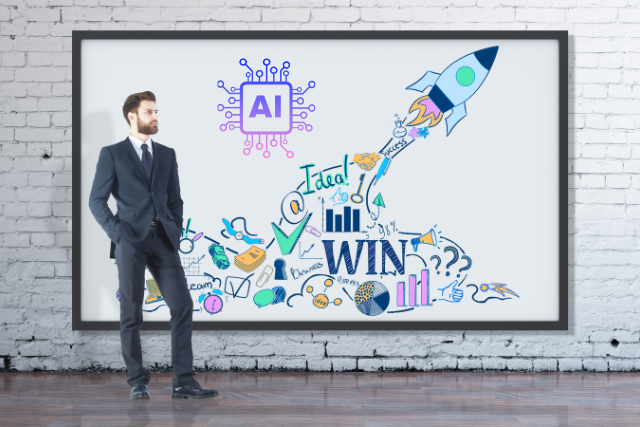How AI Video Editing Software is Changing the Content Creation Landscape

The world of content creation is constantly evolving, and video content has become a dominant force across all platforms. As the demand for high-quality video content grows, so does the need for efficient and powerful editing tools.
AI video editing software has emerged as a game-changer, revolutionizing how creators produce videos. This article explores how AI video editing software transforms the content creation landscape, highlighting its benefits, features, and impact on the industry.
The Rise of AI in Video Editing
What is AI Video Editing Software?
AI video editing software leverages artificial intelligence and machine learning algorithms to automate and enhance various aspects of the video editing process. These tools can perform tasks such as cutting and trimming, adding effects, enhancing audio, and generating complete video edits based on user inputs.
Why AI is Important in Video Editing
The integration of AI in video editing offers several advantages:
- Efficiency: AI tools can significantly speed up editing by automating repetitive tasks.
- Accessibility: Non-professionals can produce high-quality videos without extensive editing skills.
- Creativity: AI tools provide creative suggestions and options that users might not have considered.
- Consistency: Automated editing ensures a consistent style and quality across multiple videos.
Key Benefits of AI Video Editing Software
1. Time-Saving Automation
How AI Saves Time
AI video editing software can automate tedious tasks such as sorting through footage, identifying key scenes, and applying transitions. This allows creators to focus on the creative aspects of editing rather than getting bogged down in manual processes.
Example
AI tools like Adobe Premiere Pro’s Sensei can automatically generate video edits by analyzing the content and selecting the best clips. This feature is particularly useful for creating highlights and trailers.
2. Enhanced Editing Capabilities
Advanced Features
AI video editing software comes with advanced features that enhance the quality of the final product. These include:
- Auto-correction: Automatically adjusts lighting, color balance, and exposure to improve video quality.
- Voice Recognition: Syncs audio and video by recognizing speech patterns.
- Smart Effects: Applies effects and transitions intelligently based on the content.
Example
Final Cut Pro’s AI-driven features include intelligent color grading and automated noise reduction, ensuring that videos look professional without extensive manual adjustments.
3. Improved Accessibility
Making Editing Accessible
AI video editing tools are designed to be user-friendly, allowing individuals with little to no editing experience to create polished videos. Intuitive interfaces and guided workflows simplify the editing process.
Example
Tools like Magisto use AI to analyze and edit video content automatically. Users simply upload their footage, select a style, and the software produces a professional-looking video.
4. Personalized Content Creation
Tailoring Content to Audiences
AI can analyze audience preferences and behaviors to create personalized video content. This is particularly useful for marketers and content creators looking to tailor their videos to specific demographics.
Example
Wibbitz’s AI platform enables creators to produce personalized video content by analyzing audience data and suggesting relevant edits and themes.
Leading AI Video Editing Tools
1. Adobe Premiere Pro
Features
- Adobe Sensei: AI-driven tools for automated editing, scene detection, and smart tagging.
- Auto Reframe: Automatically adjusts video aspect ratios for different platforms.
- Advanced Color Grading: AI-powered color correction and grading.
2. Final Cut Pro
Features
- Smart Conform: Automatically resizes and crops videos for various formats.
- Voice Isolation: AI-powered tool to reduce background noise and enhance dialogue.
- Auto Enhance: Intelligent adjustments for lighting and color.
3. Magisto
Features
- Automated Editing: AI analyzes and edits footage automatically.
- Themes and Styles: Users can select from various themes to match the video’s purpose.
- Music Selection: AI suggests and syncs music tracks based on the video’s mood and pace.
4. Wibbitz
Features
- Content Automation: AI-driven content creation for news, marketing, and social media videos.
- Customizable Templates: Pre-designed templates that can be personalized.
- Data-Driven Editing: Uses audience data to optimize video content.
5. Lumen5
Features
- Text-to-Video: Converts blog posts and articles into engaging videos using AI.
- Automated Storyboarding: AI generates storyboards based on the provided text.
- Media Library: Access to millions of stock photos, videos, and music tracks.
The Impact of AI Video Editing on Content Creation
Democratization of Video Production
AI video editing tools have democratized video production, making it accessible to a broader audience. Small businesses, marketers, and hobbyists can now create professional-quality videos without the need for expensive equipment or extensive training.
Increased Productivity
By automating repetitive tasks and providing intelligent editing suggestions, AI tools significantly increase productivity. Creators can produce more content in less time, allowing them to focus on other aspects of their projects.
Enhanced Creativity
AI video editing software offers creative suggestions and possibilities that might not have been considered otherwise. This expands the creative potential of content creators, enabling them to experiment with new styles and ideas.
Consistency and Quality
AI ensures a consistent style and quality across multiple videos, which is particularly beneficial for brands and businesses. Automated editing features maintain a high production standard, enhancing the overall viewer experience.
FAQs
What is AI video editing software?
AI video editing software uses artificial intelligence and machine learning algorithms to automate and enhance various aspects of the video editing process, including cutting, trimming, applying effects, and optimizing audio.
How does AI improve video editing efficiency?
AI improves efficiency by automating repetitive tasks, such as sorting through footage, applying transitions, and syncing audio. This allows editors to focus on the creative aspects of video production.
Can AI video editing tools be used by non-professionals?
Yes, AI video editing tools are designed to be user-friendly, making it possible for individuals with little to no editing experience to create professional-quality videos.
What are some popular AI video editing tools?
Popular AI video editing tools include Adobe Premiere Pro, Final Cut Pro, Magisto, Wibbitz, and Lumen5. These tools offer a range of features that leverage AI to enhance the video editing process.
How does AI personalize video content?
AI can analyze audience preferences and behaviours to create personalized video content tailored to specific demographics. This is useful for marketers and content creators looking to target their videos more effectively.
Conclusion
AI video editing software is revolutionizing the content creation landscape by making video production more efficient, accessible, and creative.
These tools empower non-professionals to produce high-quality videos and help seasoned editors save time and enhance their work. As AI technology advances, the possibilities for video editing are bound to expand, further transforming how we create and consume video content.






